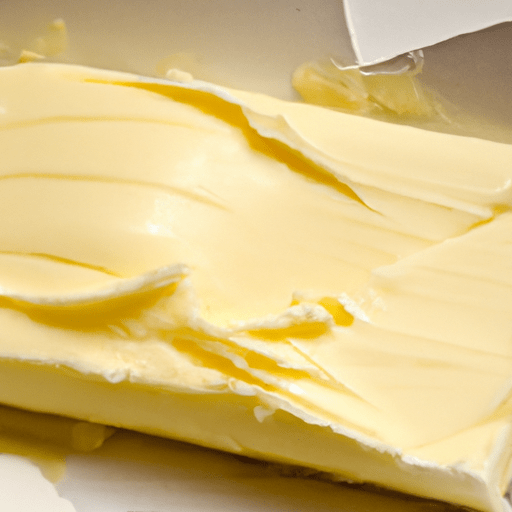Unsalted Sweet Cream Butter: The Soft and Creamy Delight
When it comes to indulgence and culinary versatility, unsalted sweet cream butter undeniably takes the center stage. This luscious and velvety delight has been a staple in kitchens around the world for centuries. In this blog post, we will explore the taste, common uses, nutritional value, and delve into the intriguing history and facts surrounding this culinary gem.
Unleashing the Taste of Delicacy
Unsalted sweet cream butter is a delightful combination of cream, churned to perfection, and free of any added salt. This distinct ingredient possesses a pure, rich, and creamy flavor that enhances the taste of any culinary creation it graces. With its smooth and velvety texture, it effortlessly melts into a pool of silky goodness when heated, infusing dishes with its unmistakable buttery essence.
Common Uses in Cooking
Unsalted sweet cream butter shines brightly in a plethora of culinary applications, both in savory and sweet dishes. Its versatility makes it a true kitchen champion. Here are a few popular uses:
Baking: Whether it’s tender cookies, flaky pastries, or moist cakes, unsalted sweet cream butter is a crucial ingredient that ensures the perfect texture and flavor in baked goods. The absence of salt allows bakers to have complete control over the overall taste of their creations, making it ideal for those who prefer precise control over the final product.
Sauces and Gravies: When it comes to enriching sauces and gravies, unsalted sweet cream butter adds a luxurious touch. Its smooth and velvety consistency helps to emulsify and thicken sauces, elevating them to new heights of flavor and decadence.
Sautéing and Pan-Frying: Unsalted sweet cream butter is a dream for cooking enthusiasts who love to sizzle ingredients in a skillet. Its high smoke point makes it an excellent choice for sautéing and pan-frying, imparting a rich, golden color and an unmatched buttery taste to dishes.
Nutritional Value
While unsalted sweet cream butter undoubtedly adds a creamy indulgence to dishes, it is important to consider its nutritional value. Here is a breakdown of the typical nutritional profile of unsalted sweet cream butter (per 1 tablespoon):
- Calories: 102
- Fat: 12g
- Saturated Fat: 7.7g
- Cholesterol: 31mg
- Carbohydrates: 0.1g
- Protein: 0.1g
Though butter is a high-calorie and high-fat ingredient, it does contain essential fat-soluble vitamins such as Vitamin A, Vitamin E, and Vitamin D, albeit in small amounts. Moderation is key when enjoying its rich and creamy goodness.
A Taste of History and Fascinating Facts
The origins of butter can be traced back thousands of years, with its discovery believed to have occurred accidentally during the process of making cheese. The use of unsalted butter has been a part of Western cuisine for centuries, while salted butter gained popularity as a preservation method before refrigeration.
Did you know that butter sculptures have been a part of cultural events for centuries? From intricate sculptures displayed at fairs to extravagant creations at butter festivals, this unique art form showcases the versatility and significance of this beloved ingredient.
In Closing
Unsalted sweet cream butter is truly a culinary treasure. Its smooth, creamy, and indulgent nature contributes to the creation of countless delectable dishes. From baked goods to savory delights, this versatile ingredient adds a touch of luxury and richness that elevates every recipe it graces. So, the next time you embark on a culinary journey, don’t forget to savor the magic of unsalted sweet cream butter!
Unsalted Sweet Cream Butter
Origin: Butter has been a staple food for thousands of years and its exact origin is uncertain. However, it is believed that butter was first made by nomadic tribes in Central Asia around 8000-9000 BCE. Over time, the art of butter making spread to different regions, and today it is widely consumed and produced across the world.
Common Uses: Unsalted sweet cream butter is a versatile ingredient used in various culinary applications. It is commonly used in baking to add richness and flavor to cakes, cookies, pastries, and bread. It is also used for sautéing and frying, lending a rich taste to dishes. Additionally, it is often used as a spread on toast, pancakes, and other breakfast items.
Nutritional Benefits: Unsalted sweet cream butter is a concentrated source of energy and provides essential fat-soluble vitamins, such as vitamins A, D, E, and K. It also contains small amounts of essential fatty acids. However, it is important to consume butter in moderation as it is high in saturated fat and calories.
Unique Properties: Unsalted sweet cream butter is made specifically from sweet cream, meaning it is produced from fresh cream without the addition of any cultures or souring agents. This gives it a mild and sweet flavor compared to its cultured butter counterparts. It has a smooth and creamy texture, making it easy to spread or use in recipes.
Historical Significance: Butter has played a significant role in various cuisines and cultures throughout history. In ancient times, it was often used as a commodity, a source of energy, and a means of preserving milk fat. In many cultures, butter holds symbolic and ceremonial value, such as the practice of presenting a lump of butter as a sign of welcome and hospitality. Over time, butter has become a beloved and widely used ingredient in countless recipes and culinary traditions.




Use the share button below if you liked it.
It makes me smile, when I see it.